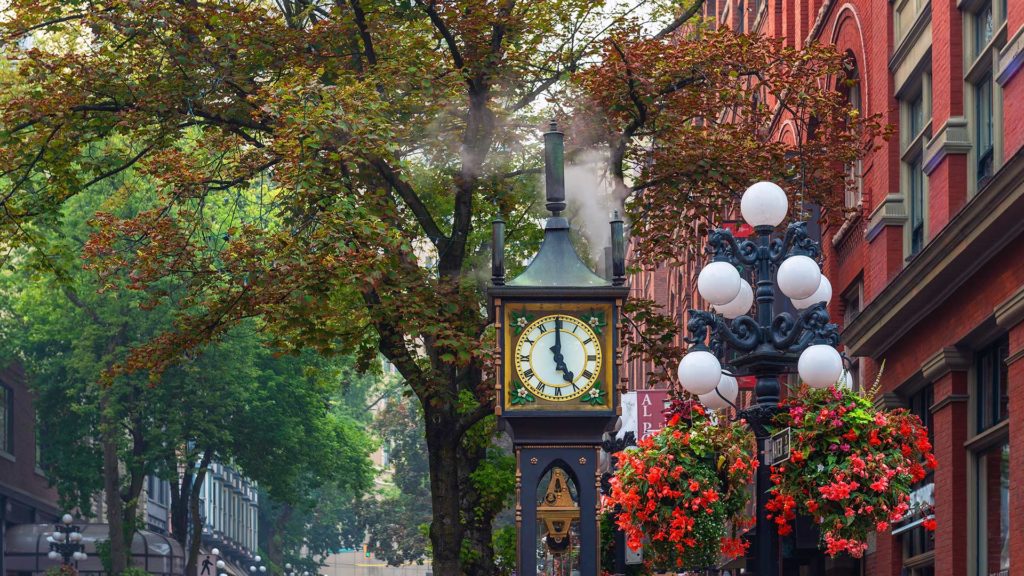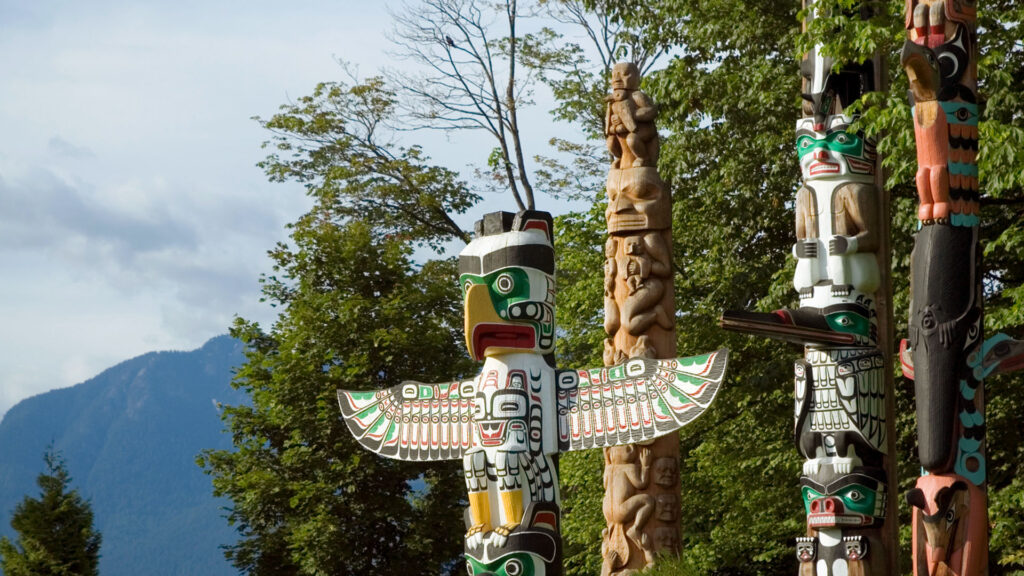Quick Guide
March – May, September – November
These are ideal months to visit Vancouver; the weather is temperate and crowds are fewer and prices lower than in summer.
June – August
Summer is peak season in Vancouver, with the best chances for sunny, warm weather. However, prices and crowds peak, as well.
December – February
Winter temperatures are chilly and skies are often overcast; however, Vancouver makes a great base for winter sports in nearby spots like Whistler.
Visas
For current information on passport and visa requirements for entering Canada, visit the Citizenship and Immigration Canada website.
Money
The local currency is the Canadian dollar ($). ATMs are widely available. Tipping 15 – 20 percent is the norm at restaurants.
Travel Health
Before traveling, research and prepare for what to do if you get sick while away.
Getting Here
Vancouver is served by Vancouver International Airport (YVR), known for housing a number of famed works of art, including the massive bronze sculpture, “Spirit of Haida Gwaii: The Jade Canoe” — keep an eye out for it in the international terminal.
Getting Around
Public transport is efficient and easy to manage; the TransLink system includes the electric trolley, buses, SeaBus catamaran ferry, and the light-rail SkyTrain. For travel outside the city, car rentals are widely available.
Local Lingo
Most of Vancouver’s population speaks English as a first or second language, though because the city is incredibly diverse, it’s quite multilingual, with Chinese, Punjabi, German, Italian and French also frequently spoken. If you want to sound like a local start calling it “Vancity.”
Must-Have Apps
TransLink; iParks Explorer; Vancouver Street Food
Insider Tips
Granville Island is one of Vancouver’s top attractions, with its Public Market drawing the lion’s share of tourist traffic. Most visitors will stop by the market to snap obligatory shots of the colorful, piled-high fruits and veggies, tempting pastries and candies on display. But be sure to dig deeper here, exploring the island’s arts, crafts, theater and entertainment just beyond the Public Market’s doors.
March – May, September – November
These are ideal months to visit Vancouver; the weather is temperate and crowds are fewer and prices lower than in summer.
June – August
Summer is peak season in Vancouver, with the best chances for sunny, warm weather. However, prices and crowds peak, as well.
December – February
Winter temperatures are chilly and skies are often overcast; however, Vancouver makes a great base for winter sports in nearby spots like Whistler.
Visas
For current information on passport and visa requirements for entering Canada, visit the Citizenship and Immigration Canada website.
Money
The local currency is the Canadian dollar ($). ATMs are widely available. Tipping 15 – 20 percent is the norm at restaurants.
Travel Health
Before traveling, research and prepare for what to do if you get sick while away.
Getting Here
Vancouver is served by Vancouver International Airport (YVR), known for housing a number of famed works of art, including the massive bronze sculpture, “Spirit of Haida Gwaii: The Jade Canoe” — keep an eye out for it in the international terminal.
Getting Around
Public transport is efficient and easy to manage; the TransLink system includes the electric trolley, buses, SeaBus catamaran ferry, and the light-rail SkyTrain. For travel outside the city, car rentals are widely available.
Local Lingo
Most of Vancouver’s population speaks English as a first or second language, though because the city is incredibly diverse, it’s quite multilingual, with Chinese, Punjabi, German, Italian and French also frequently spoken. If you want to sound like a local start calling it “Vancity.”
Must-Have Apps
TransLink; iParks Explorer; Vancouver Street Food
Insider Tips
Granville Island is one of Vancouver’s top attractions, with its Public Market drawing the lion’s share of tourist traffic. Most visitors will stop by the market to snap obligatory shots of the colorful, piled-high fruits and veggies, tempting pastries and candies on display. But be sure to dig deeper here, exploring the island’s arts, crafts, theater and entertainment just beyond the Public Market’s doors.
Did You Know?
Take a dip in Kitsilano Pool, Canada’s longest saltwater swimming pool. This outdoor pool measures 451 feet (137.5 meters) — nearly the size of three Olympic pools and is open year-round.
Marriott Bonvoy Offers & Promotions
Enjoy exclusive offers on hotels stays and experiences in Vancouver
Offers
Where to Stay
Book Over 30 Hotel Brands Around the World
8 Hotels
8
















